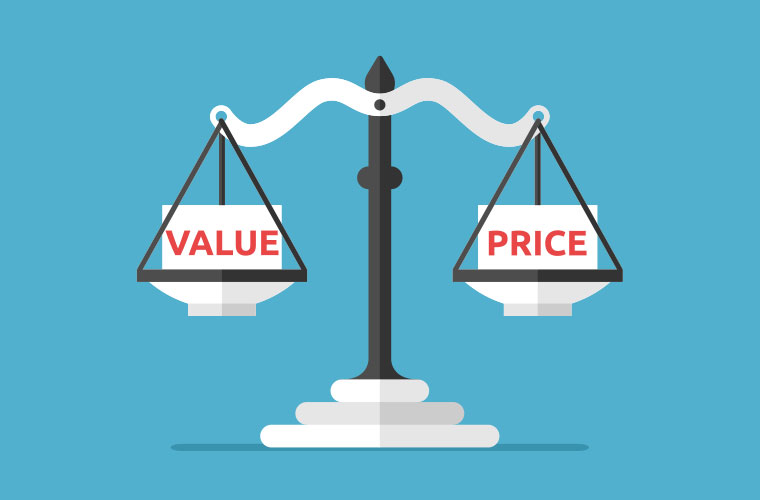In an era of cheap LED alternatives and off-brand online options, distributors discuss customers’ current level of price sensitivity and some of the issues that arise with lower-priced products.
When LEDs first emerged for general lighting applications 5-10 years ago, their price points drove many end users and channel members to seek out cheaper alternatives from offshore and/or lesser-known manufacturers. But are distributors still contending with that dynamic? In Part 1 of lightED’s two-part coverage, three experts – Rhandi Kuchenmeister, purchaser at K/E Electric Supply Corp. in Mount Clemens, MI, Mac Doyle, Ladson and Charleston, SC-based area branch manager at Border States Electric, and Ryan Micheletto, district operations manager at Crescent Electric Supply in Joliet, IL – share their current experience with price-sensitive customers and some of the issues that arise with low-priced LED products.
lightED: Do you find that many, or at least some percentage of, customers are attracted to and/or are buying low-cost items made by offshore manufacturers or inexpensive products they find online? Or do they understand the value of a higher-quality product made/backed by a trusted manufacturer and provided by a distributor like yourself?
Kuchenmeister: Early on in the LED market, when a slew of unknown startups was selling low-cost lamps and fixtures, it was harder to convince customers and end users of the difference. Then we started to see some of those startups fail, recalls issued, warranty problems arise, and color matching problems occur and, unfortunately, a lot of our customers got burned. K/E Electric prides itself on our long-standing partnerships with our reps and manufacturers and we stood by them. Sure, we lost a few
orders here and there to the unknowns, but we also avoided a lot of problems too. Now I think most of our customers, and a good portion of the general public, have seen or heard of those problems and mostly rely on name-brand products. The value of standing behind the products you sell and the services you provide and having a manufacturer standing behind you is unparalleled in the eyes of a consumer and contractor.
Doyle: No matter which market you’re in, there will always be customers who are solely focused on price. If there wasn’t a customer base for these types of products, you wouldn’t see the increased presence of these items that we’re seeing today. With that being said, we’ve always tried to align ourselves with customers – and vendors – who are focused on quality products and services. As a distributor, we also pride ourselves on the products we offer and sell.
Micheletto: There are definitely price-sensitive customers out there, and they’ll go above and beyond to shop and find the lowest prices available. However, I feel like that number is continually falling and a very minute amount of it is actually from our major customer base. There’s so much more to lighting now than price alone, and our customers are becoming more and more aware of that. More importantly, they know that what we have on the shelf and what we quote is from a trusted and recognized brand that we can get support from if and when they need it.
lightED: From your experience, what types of issues typically arise with cheaper offshore products and/or products from little-known manufacturers that customers purchase online?
Kuchenmeister: The typical issues we’ve seen from these products are simple things like damage due to improper packaging, CRI mismatching between fixtures, and lack of general information about the product. I’ve seen some manufacturers whose spec page barely contains enough information to fill the Lighting Facts label on the side of the package; this goes to show you that they’re barely tested, let alone UL/DLC/Energy Star-rated, which really impacts those products’ eligibility for any type of utility rebate where applicable.
Doyle: The old saying of “you get what you pay for” comes to mind immediately. Sure, there are some areas where a customer can get away with cutting cost by using lower-quality products. But lighting, in my opinion, shouldn’t be the area where you settle for the cheapest option. The biggest issue I see for customers who purchase these products occurs when something goes wrong – something arrives damaged or broken, for example. When this occurs, it’s typically much more difficult to get a replacement or even a response from the supplier/manufacturer.
Micheletto: There’s a vast array of issues that we’ve run into with customers who decided to go the inexpensive route in the past and now have come to us for a solution. Issues range from the simple strobing of LED arrays in fixtures, or complete driver failures in fixtures less than a year old, to visible color temperature variations across identical fixtures that were ordered and installed at the same time; and even to downright dangerous situations where the internal wiring of the fixture was causing a fault and safety concern. In almost every single one of those situations, we were called upon because the customer couldn’t get support from their original place of purchase or vendor. Aside from the quality of construction, the lower efficacy of the fixtures, and their much-lower quality standards (a good portion of these fixtures aren’t even tested or certified to the lighting standards they claim), support is the biggest issue customers face by going the “price and price only” route when selecting LED lighting.
In Part 2 of our interview, Rhandi Kuchenmeister, Mac Doyle, and Ryan Micheletto will further discuss how distributors convey value to customers in an era of cheap LED alternatives.
Tagged with lightED